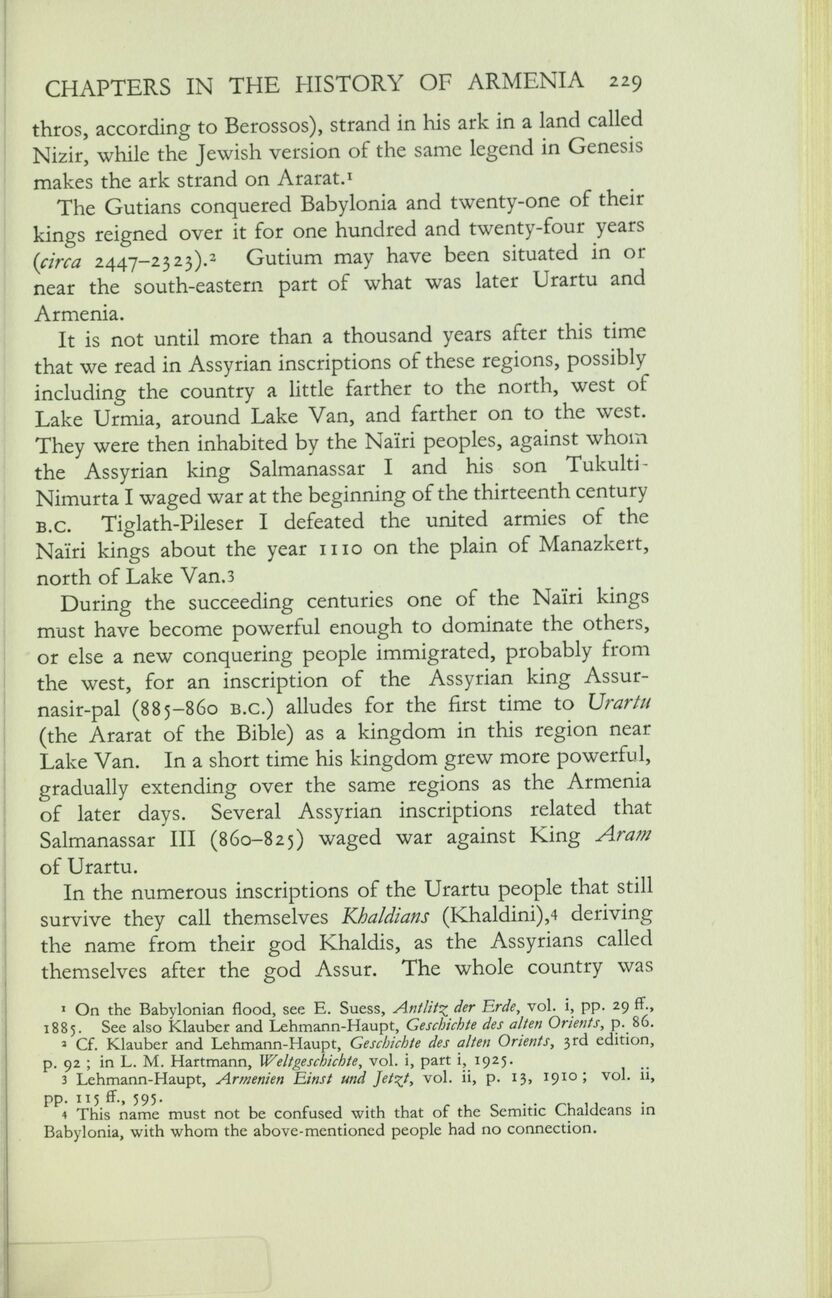
Full resolution (JPEG) - On this page / på denna sida - X. Chapters in the history of Armenia

<< prev. page << föreg. sida << >> nästa sida >> next page >>
Below is the raw OCR text
from the above scanned image.
Do you see an error? Proofread the page now!
Här nedan syns maskintolkade texten från faksimilbilden ovan.
Ser du något fel? Korrekturläs sidan nu!
This page has never been proofread. / Denna sida har aldrig korrekturlästs.
CHAPTERS IN THE HISTORY OF ARMENIA 229
thros, according to Berossos), strand in his ark in a land called
Nizir, while the Jewish version of the same legend in Genesis
måkes the ark strand on Ararat.1
The Gutians conquered Babylonia and twenty-one of their
kings reigned over it for one hundred and twenty-four years
{circa 2447-23 23).^ Gutium may have been situated in or
near the south-eastern part of what was later Urartu and
Armenia.
It is not until more than a thousand years after this time
that wc read in Assyrian inscriptions of these regions, possibly
including the country a little farther to the north, west of
Lake Urmia, around Lake Van, and farther on to the west.
They were then inhabited by the Nairi peoples, against whom
the Assyrian king Salmanassar I and his son Tukulti-
Nimurta I waged war at the beginning of the thirteenth century
B.c. Tiglath-Pileser I defeated the united armies of the
Nairi kings about the year 11 10 on the plain of Manazkert,
north of Lake Van.3
During the succeeding centuries one of the Nairi kings
must have become powerful enough to dominate the others,
or else a new conquering people immigrated, probably from
the west, for an inscription of the Assyrian king Assur
nasir-pal (885-860 b.c.) alludes for the first time to Urartu
(the Ararat of the Bible) as a kingdom in this region near
Lake Van. In a short time his kingdom grew more powerful,
gradually extending over the same regions as the Armenia
of later days. Several Assyrian inscriptions related that
Salmanassar ’ 111 (860-825) waged war against King Aram
of Urartu.
In the numerous inscriptions of the Urartu people that still
survive they call themselves Khaldians (Khaldini),4 deriving
the nåme from their god Khaldis, as the Assyrians called
themselves after the god Assur. The whole country was
1 On the Babylonian flood, see E. Suess, Antlit-^ der Erde, vol. i, pp. 29 ff.,
1885. See also Klauber and Lehmann-Haupt, Geschicbte des alten Orients, p. 86.
» Cf. Klauber and Lehmann-Haupt, Gescbichte des alten Orients, 3rd edition,
p. 92 ; in L. M. Hartmann, Weltgescbicbte, vol. i, part i, 1925.
3 Lehmann-Haupt, Armenien Einst und Jet^t, vol. ii, p. 13, 191° ’, vol. ii,
pp. 115 ff., 595.
4 This nåme must not be confused with that of the Semitic Chaldeans in
Babylonia, with whom the above-mentioncd people had no connection.
<< prev. page << föreg. sida << >> nästa sida >> next page >>